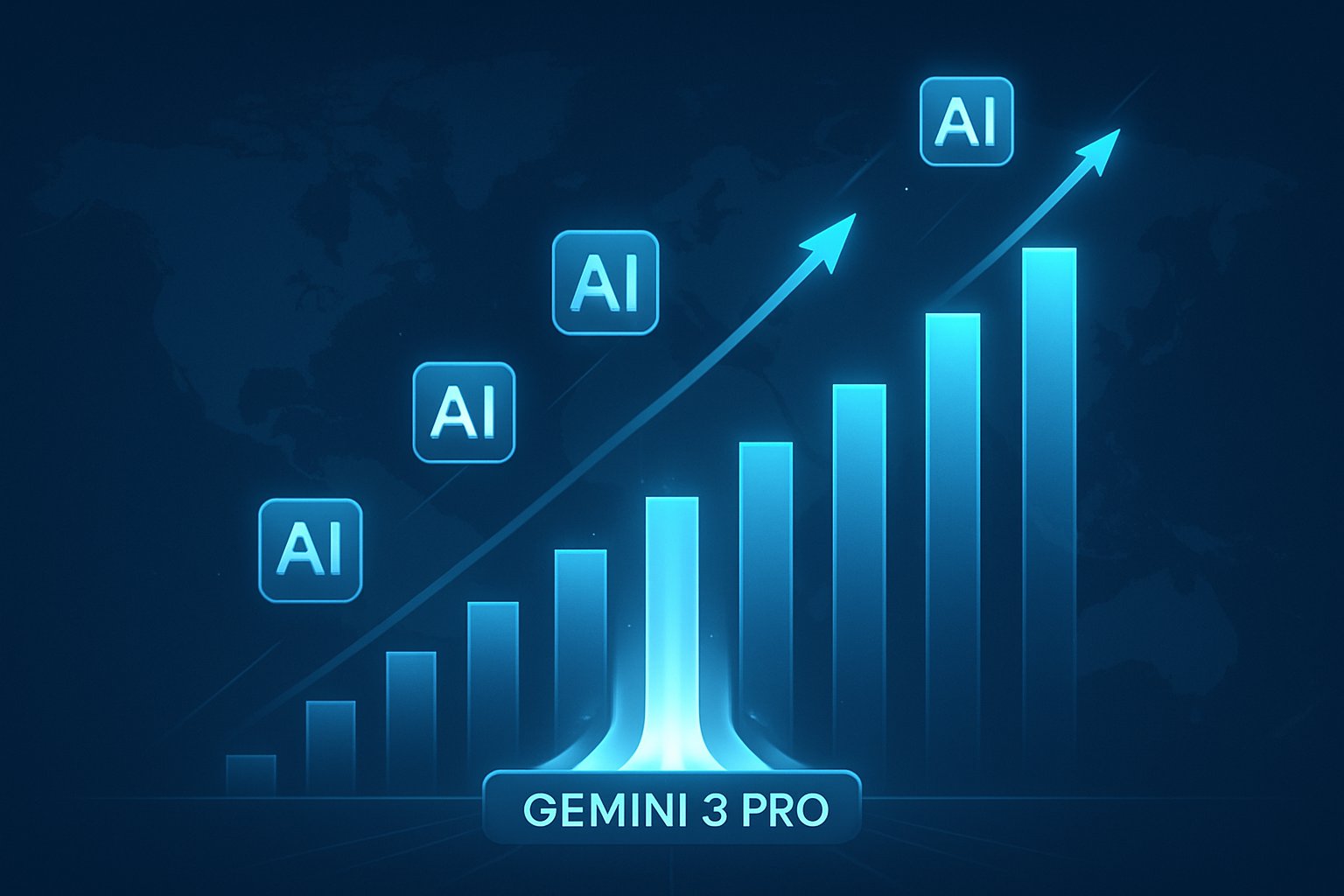
AI CERTS
9 hours ago
Gemini 3 Pro fuels model launch momentum globally
Launch Timeline Highlights
Gemini 3 surfaced on 18 November 2025. Subsequently, Gemini 3 Pro began appearing inside the Gemini app and Workspace features. Meanwhile, 20–21 November saw the debut of Nano Banana Pro, the image-generation layer built on the same backbone. In contrast with earlier staged updates, Google framed this release as genuinely global.

Regional gating still applies, yet most paid and free tiers now include the core functions. Therefore, developers could access preview endpoints through AI Studio within hours. Public posts from Demis Hassabis stressed “instant availability” for creative tools.
These rollout dates demonstrate Google’s tighter cadence. However, they also underline resource coordination across Search, Ads, and Android. The schedule cements early model launch momentum. This pacing sets the stage for technical discussion ahead.
Technical Upgrades Explained
The Pro variant supplies higher capacity and state-of-the-art reasoning for text, code, and images. Additionally, Google claims stronger multimodal understanding, enabling consistent cross-modal references. Nano Banana Pro adds 4K outputs, studio lighting controls, and multilingual text rendering.
Developers also receive the new “vibe coding leadership” capability. Consequently, agentic workflows can plan, code, and test within a single prompt chain. Furthermore, the embedded "Thinking" model selector swaps modes automatically, picking analysis, synthesis, or vision pipelines as required.
Google touts internal benchmarks like Terminal-Bench 2.0 at 54.2%. Nevertheless, independent labs have yet to validate the claim. Therefore, prudent teams will test corner-case accuracy before committing workloads.
These enhancements signal a pivot toward professional reliability. In turn, the advances reinforce model launch momentum. The next section drills into hard numbers and pricing.
Benchmark And Pricing
Official graphs show Gemini 3 Pro leading earlier Gemini variants across reasoning and code metrics. Moreover, Google posted public leaderboard gains on LMArena suites. However, no published comparisons yet pit the system against GPT-5.1 or Claude 3.5.
- state-of-the-art reasoning scores: +7% over Gemini 2 Ultra
- Multimodal fidelity: 4K renders with 92% text clarity
- Preview API cost: $2 per million input tokens
- Output pricing: $12 per million output tokens
Pricing stays promotional during preview. Consequently, early adopters can stress-test workloads without large invoices. Additionally, SynthID watermarking remains included at no extra charge.
These metrics underpin monetary planning around model launch momentum. Yet transparent independent tests will decide lasting perception. Competitive reaction offers another important lens.
Competitive Industry Reactions
Sam Altman congratulated Google publicly while pushing GPT-5.1 patches sooner than planned. Meanwhile, Elon Musk echoed praise yet teased Grok 4.1 upgrades. Marc Benioff claimed the image output “looks studio ready.”
OpenAI’s leaked memo cited temporary economic headwinds, signaling pressure. Furthermore, analysts at Wired and CNBC framed Google’s distribution advantage as decisive. In contrast, smaller vendors must rely on partnerships rather than built-in Android channels.
The chorus illustrates how model launch momentum influences roadmaps across the sector. Consequently, enterprise clients gain leverage as suppliers race to outdo benchmarks.
These reactions spotlight shifting power dynamics. However, buyers still need clarity on deployment paths, explored next.
Enterprise And Developer Impact
Gemini 3 Pro hooks directly into Workspace Slides and Vids. Therefore, marketing teams can draft visuals without exporting assets elsewhere. Additionally, NotebookLM now supports cross-document reasoning, driven by state-of-the-art reasoning layer enhancements.
Developers gain streamlined endpoints and the helpful "Thinking" model selector. Moreover, multimodal understanding reduces prompt engineering overhead. Start-ups building creative tools can iterate faster because vibe coding leadership automates scaffolding code.
Professionals can formalize expertise through the AI Engineer certification. Consequently, teams demonstrate readiness to harness new integrations.
These pathways widen Google’s funnel and amplify model launch momentum. Despite opportunities, risk factors deserve balanced coverage.
Risks And Next Steps
Safety remains under scrutiny. Google mentions staged “Deep Think” testing to curb misuse. Nevertheless, expanded agent actions raise governance concerns.
Moreover, benchmark transparency lags. Enterprises require third-party comparisons between claimed state-of-the-art reasoning and rival models. Meanwhile, regulators may question watermark robustness.
Reporters should press Google for regional availability spreadsheets and final API billing tiers. Additionally, independent labs should validate multimodal understanding across languages. Subsequently, creative agencies need case studies proving output savings.
These action items frame responsible adoption and sustain model launch momentum. The conclusion distills overarching lessons.
Key Takeaway Summary
Google’s latest release blends deeper intelligence, competitive pricing, and broad distribution. Moreover, vibe coding leadership and the flexible "Thinking" model selector advance developer ergonomics. Consequently, enterprises gain new creative leverage.
Ongoing independent testing will confirm or challenge Google’s claims around state-of-the-art reasoning and multimodal understanding. Meanwhile, proactive skill building—supported by certifications—will separate early winners from hesitant followers.
These insights encapsulate why analysts track model launch momentum so closely.
Conclusion: Gemini 3 Pro’s global rollout signals escalating innovation speed. Furthermore, integrated image tools push multimodal creation toward professional standards. Nevertheless, transparent benchmarks and robust safety remain vital. Technical leaders should start experiments, request independent data, and upskill via respected programs. Therefore, explore the linked certification and turn model launch momentum into tangible enterprise advantage.



